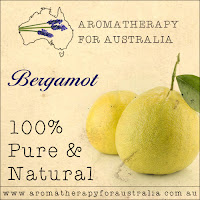
Family: Rutaceae
Common Name: Bergamot
Botanical Name: Citrus aurantium subsp. bergamia (Citrus bergamia)
Extraction method: Cold expression of the peel of the nearly ripe fruit.
Odour: fresh, sweet-fruity scent
General Description:
A small tree, about 4.5m high with smooth oval leaves, bearing small round fruit that ripen from green to yellow, much like a miniature orange in appearance. The rather small bergamot fruits are picked for distillation while still unripe and green, the product of a variety of bitter orange tree. Originating in tropical parts of Asia, the tree is grown in southern Italy, Sicily, and the Ivory Coast.
History/Folk lore:
The oil takes its name from a small town in Italy, Bergamo, where the tree was originally cultivated. However, legend has it that Christopher Columbus found the tree in the Canary Islands and introduced it into Spain and Italy. Records show its use in Florence since 1725 where it was popular in Italian folklore medicine for hundreds of years but was not exported until relatively recent times.
A cheaper form of Bergamot oil is distilled from unripe, fallen fruit and sometimes used to adulterate the more expensive oil. The leaves are occasionally distilled which gives us another form of Petitgrain. Bergamot imparts that unusual flavour to Earl Grey tea. Bergamot is probably one of the most common ingredients in all perfumes and became a key ingredient of the classic toilet water 'eau-de-Cologne'. In Greece the unripe fruits are preserved as sweetmeats to be eaten by the spoonful when having coffee or as a dessert. Bergamot oil was an important remedy in Italian folk medicine, and from the 16th century onward appeared in a number of European herbals as an antiseptic and febrifuge.
Main Uses In Massage:
Bergamot oil is frequently used in blends to help with nervous tension, fear and anxiety, depression, and stress-related problems. Chronic stress has been shown to have drastic effects on resistance to illness. Like most citrus oils, bergamot is a good antibacterial and antifungal, and these qualities together with its antidepressant effect, make it useful for clients who tend to catch infections when they feel low and disheartened.
Therapeutic Properties or Actions:
Analgesic, antidepressant, antiseptic, antiviral, carminative, cicatrisant, deodorant, digestive, febrifuge, sedative, tonic.
Body Systems & Therapeutic Uses:
Digestive system -Actions on the digestive system is carminative and digestive — useful in relieving colic, flatulence and indigestion. Indicated for nervous indigestion.
Nervous system - Oil has a sedative yet uplifting quality.
Urinary - Recommended for treatment of cystitis and urinary tract infections.
Skin Care - Antiseptic action makes it beneficial for treating herpes simplex type 1 , cold sores and acne. Recommended for oily skin types and used as an effective deodorising agent. Also recommended for treating eczema and psoriasis.
Energetics - Neutral with cooling and warming potential. Relaxing, restoring and calming.
Precautions:
Bergamot is photosensitizing - it makes the skin more sensitive to UV radiation. Non-photosensitising Bergamot essential oil is available but it has been highly rectified and is not recommended for use except in perfumes.
I will be posting more information about other essential oils on this blog so keep checking back.
Information on this page is for educational purposes only and should not replace advice from a medical practitioner.
© Graphics are property of Aromatherapy For Australia. Please do not use images without permission or without credit or link back to this blog post. Please read our Terms & Conditions
© Graphics are property of Aromatherapy For Australia. Please do not use images without permission or without credit or link back to this blog post. Please read our Terms & Conditions



No comments:
Post a Comment